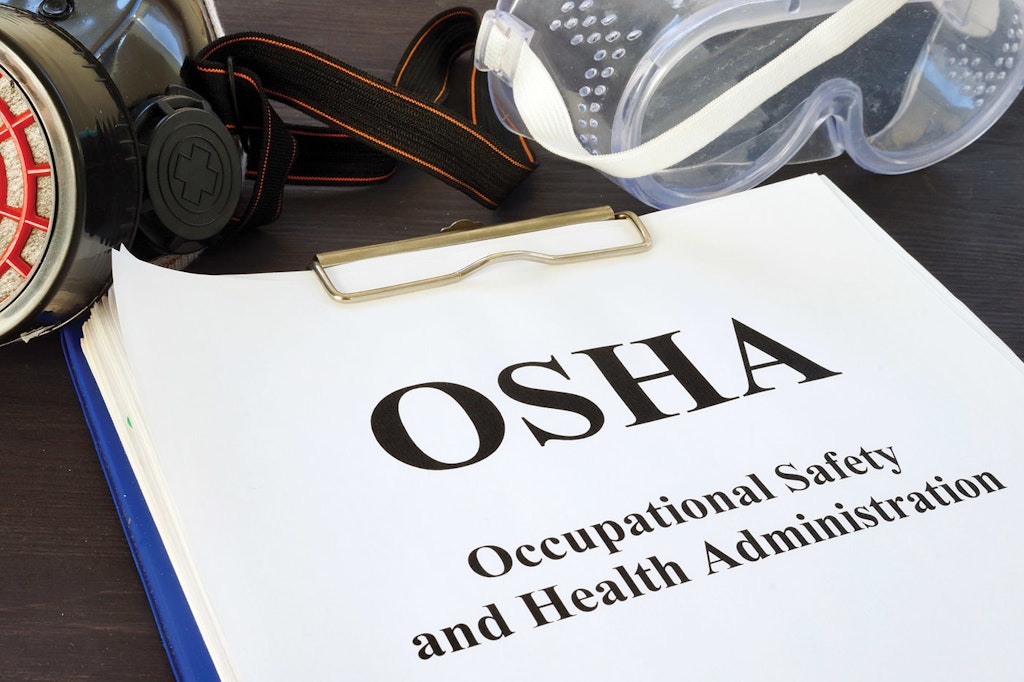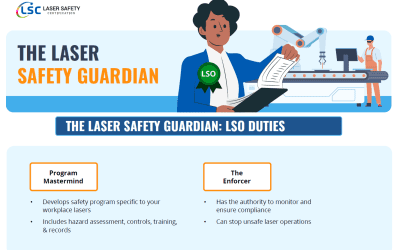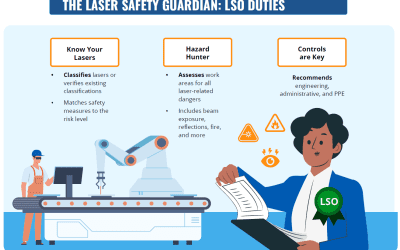The Top Ten Things To Know About OSHA Inspections
A crucial role played by the Occupational Safety and Health Administration (OSHA) is their mandate to conduct workplace inspections – announced and unannounced. OSHA inspections are not fun, but they should not be feared. Advance preparation and adherence to proper industry safety standards are a top priority in order to be prepared for an inspection.
Here are the top ten things to know about an OSHA inspection of your workplace and what may cause it.
Surprise Inspections
Yes, OSHA does have the authority to conduct unannounced inspections. These are usually prompted by imminent danger situations, employee complaints, continuing examinations of high-risk industries, and ongoing scrutiny of industries with high injury rates and specific hazards.
The primary reason for a surprise inspection is the credible threat of death or serious physical harm that could occur within a short time frame, such as the lack of proper personal protective equipment. Reports of imminent danger situations follow a specific inspection process, including conducting inspections and issuing citations and notices of proposed penalties.
Examples of imminent danger include being subjected to armed robbery or being involved in a riot, where there exists a potential for fatal injury, severe physical harm, or health hazards. OSHA compliance officers will respond immediately to these types of dangerous situations.
Employee Complaints
Employee complaints regarding safety violations or hazards at the job site can lead to an OSHA inspection if a formal complaint is filed. OSHA permits workers to submit complaints anonymously and is obligated by law to safeguard the anonymity of employees who file complaints, thereby ensuring their confidentiality during an OSHA investigation or complaint itself.
Penalties for companies that are determined to have contravened these safety and health standards due to employee complaints may face civil penalties of up to $7,000 per violation, criminal fines of up to $10,000, or imprisonment for a maximum of six months for the initial offense, as enforced by OSHA.
Targeted Inspections
OSHA’s targeted inspections focus on specific high-hazard industries or individual workplaces that have had high rates of injuries and illnesses. They identify these industries through the High Injury/Illness Rate Targeting System and Cooperative Compliance Program (CCP). Establishments with rates above their industry’s national average that have shown a consistent upward trend are pinpointed. Furthermore, OSHA conducts inspections of retail establishments with high injury rates, with a specific focus on storage and loading areas.
For example, OSHA has conducted targeted inspections in high-risk industries such as cut stone and stone product manufacturing, laser welding and etching, distribution, warehousing and storage facilities, particularly where forklifts and similar machinery is used.
Preparing for an Unannounced OSHA Inspection
Awareness that OSHA can appear unexpectedly at your workplace shouldn’t induce fear, but should motivate a state of readiness. Preparation for these unexpected OSHA inspections entails establishing a robust safety program, carrying out internal reviews, and equipping designated personnel with proper training.
Regular internal inspections play a crucial role in identifying and addressing potential hazards, thereby equipping a company to be prepared for unannounced OSHA inspections. It is imperative that management personnel or an employee representative receive training to handle OSHA inspections in order to guarantee their efficient and compliant conduct.
Implementing a Robust Safety Program
Implementing a robust safety program is a proactive approach to preparing for an OSHA inspection. A safety program is only as effective as the commitment of the organization’s leadership. It’s the management’s responsibility to set a positive tone for safety, demonstrate its importance through their actions, and ensure that safety policies are enforced consistently across the organization.
Employees play a crucial role in maintaining workplace safety. Their active involvement in identifying hazards, developing safety procedures, and participating in safety training sessions can significantly enhance the effectiveness of a safety program.
A key to workplace safety starts with identifying and addressing hazards. This starts with a comprehensive process of identifying potential hazards in the workplace, assessing their risk level, and implementing measures to eliminate or control these hazards. Regular safety audits, inspections, and hazard assessments are key components of this approach.
It is essential that all employees understand the safety policies and procedures. This requires clear, consistent communication and training to ensure that everyone knows their roles and responsibilities when it comes to safety.
Regularly Conducting Internal Inspections
Conducting regular internal inspections is a key aspect of preparing for an OSHA inspection. They help in identifying and addressing potential hazards and ensuring compliance with safety regulations. As per OSHA guidelines, companies are advised to carry out thorough safety audits at least once a year and regular safety inspections on a periodic basis, usually quarterly, semi-annually, or annually.
The essential areas that need to be addressed during regular internal OSHA inspections include conducting hazard assessments, performing safety trainings, keeping records, and conducting safety audits and risk management efforts.
Managing the OSHA Inspection
Training designated personnel to handle OSHA inspections ensures a smooth and efficient process. These individuals should undergo training to effectively manage inspections, whether they occur on-site or off-site. Their training should include:
- Providing honest responses to inspectors
- Refraining from offering unnecessary details
- Familiarizing themselves with the OSHA inspection procedure
- Educating employees to alleviate stress
- Maintaining precise documentation
- Comprehending industry-specific risks and developments
How to Respond When OSHA Arrives Unannounced
When the OSHA compliance officer arrives unexpectedly at your workplace, it’s crucial to manage the situation with a professional and composed demeanor. This starts with verifying the OSHA compliance officer’s credentials and the purpose of their visit. A safety officer or designated representative should be present during the inspection. Be sure to provide accurate information and answer any questions truthfully. Maintain a professional and courteous demeanor throughout the inspection. Emphasize the organization’s dedication to safety and any safety measures in place.
However, during the inspection, do not deny access to the Compliance Officer and carefully document the inspection by taking detailed notes and photographs. Be sure to observe the specific areas of focus of the Compliance Officer and, as important, avoid offering information voluntarily. Finally, maintain a record of the information provided to OSHA inspector.
Cooperating with the Inspection Process
Cooperating with the inspection process when OSHA arrives unannounced is crucial. It involves adhering to the following guidelines:
- Cooperate with the inspection process
- Accompany the compliance officer throughout the inspection
- Provide any requested information or documents
- Be knowledgeable about your rights, including the option to refuse an interview or request the presence of an OSHA representative or attorney.
Management plays a significant role in establishing roles and responsibilities, fostering an open and positive environment, and coordinating with OSHA through their attorney if necessary. They ensure that the inspection process is effectively managed and in accordance with legal standards.
- Documenting the Inspection
Documenting the OSHA inspection process when OSHA arrives unannounced is an important part of the process. Be prepared for unexpected inspections by following these guidelines:
- Carefully examine the inspector’s credentials upon their arrival.
- Maintain a polite yet concise demeanor throughout the inspection.
- Meticulously document all aspects of the OSHA compliance officer’s inspection, including their observations and photographs.
- Be prepared for the possibility of the compliance officer making video recordings.
- Accurately record any instrument readings.
By following these steps, you can ensure that you have a thorough and accurate record of the inspection.
Additionally, maintain concise safety records including:
- Internal safety training records and certifications appropriate to the industry
- OSHA record keeping forms for the current year and five past years
- OSHA 300 logs
- OSHA 300A summaries
- OSHA 301 forms
- Any pertinent safety issues




